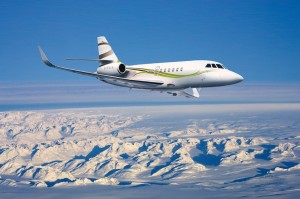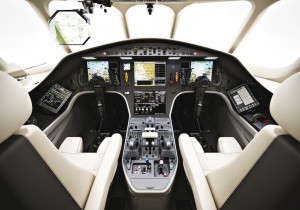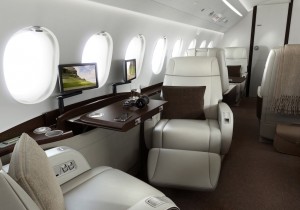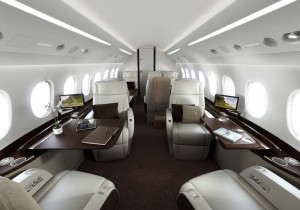Falcon 2000S:
The 3,350 nm Falcon 2000S is the new entry level aircraft into the Falcon family offering an aggressive acquisition price along with low operating costs and an impressive list of standard options. The Falcon 2000S inherits the same qualities of other Falcons: performance and efficiency, cutting edge technology and flexibility. The Falcon 2000S offers super mid-size category the largest cabin interior, leading low speed performance for even greater airport access, optimized operating costs and the greenest footprint.
The Falcon 2000S is built on the proven and capable Falcon 2000 platform. Nearly 450 are in service around the world, making it one of the most popular twin engine models in operation. In terms of performance, capability and style, the 2000S is an entirely new aircraft. Inboard slats, an enhanced and proven engine, entirely new cockpit aesthetics and BWW Group DesignworksUSA interior along with the next-generation EASy II flight deck distinguish it not only from its siblings, but also from any other aircraft on the market.
Inboard Slats for Improved Performance
The most noticeable functional development on the 2000S are inboard slats that improve takeoff and approach speeds and make it ideal to land at challenging airports. Take London City, for example, where aircraft must be able to navigate the 5.5o steep approach and quickly land on a short runway while abiding by noise abatement procedures. The Falcon 2000S can navigate such an approach at only 108 knots at standard landing weight. Additionally, a standard autobrake function will reduce landing distances by as much as 150 feet on normal approaches and 300 feet on steep approaches.
Outstanding short field and hot and high altitude performance on the 2000S can be credited in part to a wing that has been proven on the Falcon 900 and 2000 family of aircraft. The wing ensures a large flight envelope with a wide buffet boundary, improving safety and stability. A pair of high Mach blended winglets help to give customers superb efficiency during the climb and cruise portions of the flight.
Falcon 2000S City Pair Examples
Standard aircraft, 6 pax, M.80, NBAA IFR reserves, 85% annual winds):
New York London, Vancouver Sao Paulo Sal, Cape Verde, San Juan Paris Gander, Dubai Singapore Mumbai, Seoul, Perth Dubai Geneva, Hanoi Beijing Dehli, Singapore San Francisco Miami, Honolulu
With a maximum landing weight (MLW) just 1,700 pound lighter than its maximum takeoff weight (MTOW), the 2000S can take off, fly a short leg and easily land again to pick up passengers. The ability to land at 95% of its maximum takeoff weight means tankering fuel is no problem when refueling options are limited. At max takeoff weight, the 2000S quickly climbs to 41,000 feet (above airliner traffic) in only 19 minutes.
Thrust on the 2000S is provided by two highly-reliable Pratt & Whitney 308C engines providing 7,000 lbs max thrust each at ISA 15°C degrees. However, the newest generation of this engine is even more environmentally friendly due to a new TALON II combustor. It produces 20% fewer NOx emissions than the previous generation, without any penalty in power. It will also be 40% greener than required by the CAEP/6 regulations being planned for future implementation.
The Interior – Where Luxury Meets Efficiency
The 2000S offers the same spacious cabin dimensions as the Falcon 2000 with a maximum cabin width of 92 inches; a cabin height of over six feet and a cabin volume of over 1,000 cubic feet. It is available in a standard floor plan with seating for ten passengers.
The interior design is completely new, adopted from Dassault’s partnership with BMW Group DesignworksUSA which created the award-winning interior on the Falcon 7X. Three elegant color and design harmonies are available for the Falcon 2000S. ‘Sedona’ features earthy beige colors for a desert like ambiance. ‘Havana’ features a palette of browns while ‘Alpine’ offers contrasts with the crisp colors of an alpine peak and the darker colors of earth and rock.
The cabin space has been optimized for efficiency and productivity. The interior appears especially spacious to the eye through the use of visual design elements that stretch the cabin and create better flow. Up-wash and down-wash ambient lights as well as more contrast between materials further emphasize the spaciousness of the full size cabin, which provides plenty of arm and leg room for passengers.
New State of the Art Cabin Entertainment System Standard in the 2000S
Along with a unique interior, the 2000S has a new Rockwell Collins Cabin Management System that places more controls and convenience into the hands of its passengers making the transition from the office to the aircraft as seamless as possible. In addition to providing a weight savings, the new system provides high definition viewing for Blu-ray media on wide-screen monitors up to 19 inches. Functions can be controlled anywhere in the aircraft via an iPod Touch or iPhone with a special application that allows control of video playback, operation of the electronic window shades and adjustments to lights and temperature, among others.
Additionally, AirCell Axxess II Iridium Satcom system is standard on the 2000S. This system is modular so as to service today’s customers with the ability to upgrade as new technologies become available.
EASy II. Standard on the Falcon 2000S
The Falcon 2000S will come standard with the EASy II flight deck which will be redesigned with a more modern look including new paint and trim features. It will include a host enhancements designed to increase safety and situational awareness and reduce pilot workload in communications, dispatch and navigation.
Included in EASy II: improved display symbology; an update to the Flight Management System (7.1); improved Take Off and Go Around capability; a Runway Awareness and Advisory System (RAAS); and an enhanced navigation package that includes WAAS- LPV and RNP SAAAR.
Other new options available in EASy II include Synthetic Vision System (SVS); Automatic Decent Mode (ADM); XM Graphical Weather integrated into the INAV map and ADS-B Out (Automatic Dependant Surveillance –Broadcast).
Two new communication features, FANS 1A and PM-CDPLC (Controller Pilot Data Link Communication) compliant with Europe’s new datalink mandates
Improved Efficiency, Reduced Operating Costs
Efficiency wasn’t just a consideration for the 2000S – it has been built into the aircraft from every perspective. Each component has been engineered to shed excess weight. Additionally, a fuselage optimized with area rule along with blended winglets help to reduce fuel burn to that of a much smaller aircraft. The Falcon 2000S burns 10% less fuel than aircraft that are 20% smaller. Quite simply, the 2000S is a large-cabin aircraft with fuel economy and operating costs that are much less than smaller aircraft in the mid-sized business jet category.
The Falcon 2000S will be certified in the second half of 2012 with customer deliveries beginning in early 2013.



